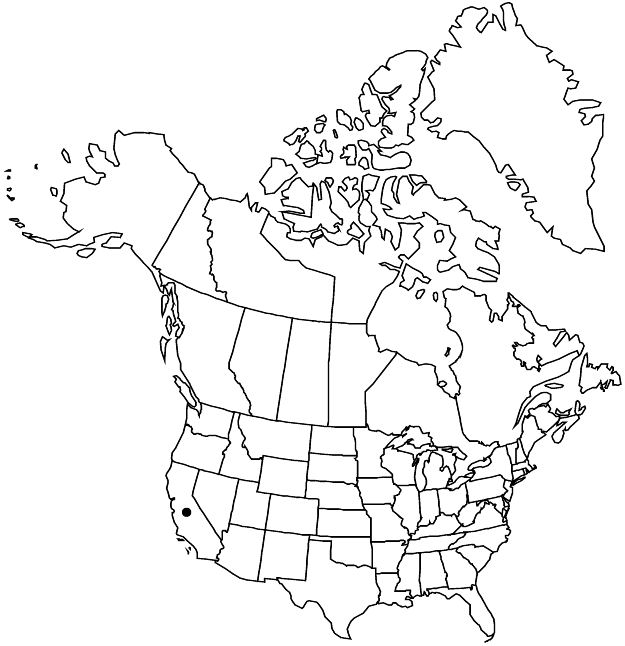Difference between revisions of "Sidalcea hickmanii subsp. napensis"
J. Bot. Res. Inst. Texas 2: 783, fig. 1. 2008.
FNA>Volume Importer |
FNA>Volume Importer |
Revision as of 20:16, 24 September 2019
Plants 0.2–0.3(–0.4) m, with erect caudex and elongated taproot. Stems erect to ascending, usually maroon, glabrous or stellate-canescent, hairs scattered, tufted, stellate and simple. Leaves: stipules often purplish, ovate, (4–)5–6 × 2–3 mm; petiole 0.6–0.9 cm on distalmost leaves, 1–3.6 cm on mid-stem leaves, to 6 cm on proximal leaves, 1/2 times to longer than blade; blade rounded, 1–1.7(–2) × 1.5–2.5(–3.4) cm, surfaces stellate-hairy, proximalmost rarely unlobed and margins deeply crenate; mid-stem blades deeply palmately 3–5(–7)-lobed, incised ± to base, middle lobe largest, lobes narrowed to base, tips deeply few-toothed. Inflorescences open, usually unbranched, 5–25 cm; bracts paired, stipulelike, distinct, ovate, 5.5–7 × 2.3 mm, longer than pedicels, shorter than calyx. Pedicels 2 mm, obscured by bracts; involucellar bractlets 3, 5–6(–8) mm, shorter or slightly longer than calyx. Flowers bisexual; calyx 7–10 mm, stellate-puberulent; petals pale pink, 9–11(–15) mm; staminal column 5 mm, minutely hairy; anthers white; stigmas 6 or 7. Schizocarps 4–5 mm diam.; mericarps 6 or 7, 1.5–2 mm, lateral walls smooth; back and margins corrugated with 2–5 wavy ridges. Seeds 1.5 mm.
Phenology: Flowering Apr–Jun.
Habitat: Chamise chaparral, rocky, rhyolitic, volcanic soil
Elevation: 400–500 m
Discussion
Of conservation concern.
Subspecies napensis is known only from a population in the inner North Coast Ranges, Napa County, and is threatened by agricultural development. It has deeply incised leaves like subsp. anomala and generally fewer and shorter stems, fewer leaves, and shorter bracts.
Selected References
None.
